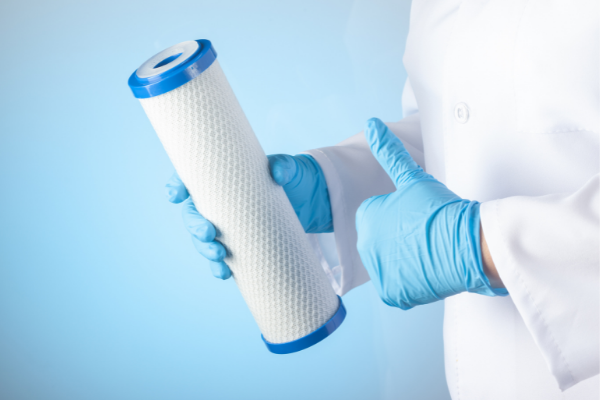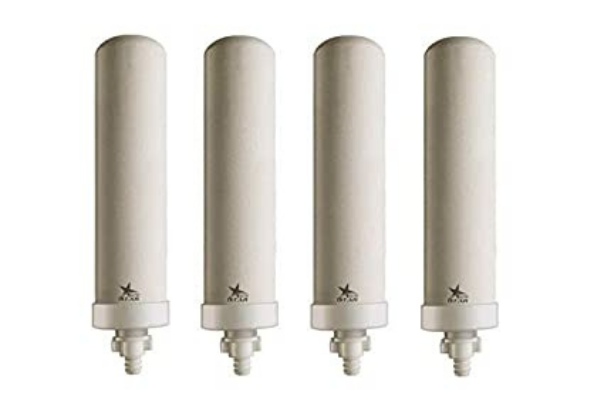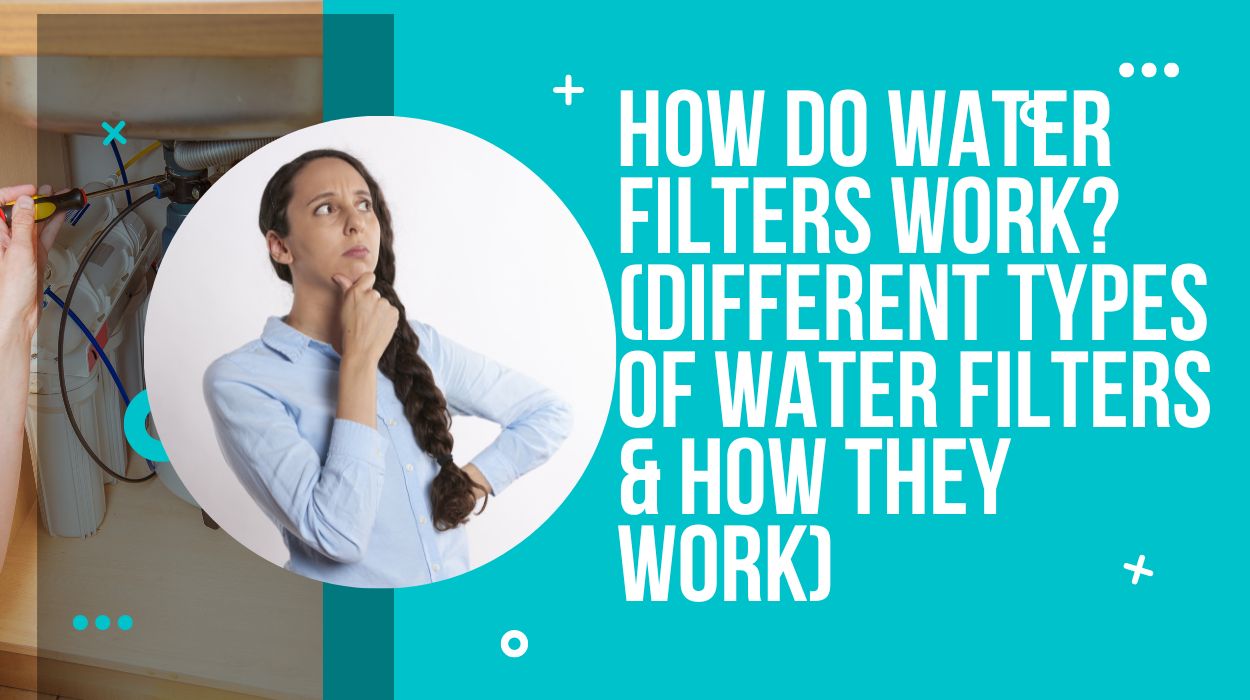Water is a vital part of life; clean drinking water is essential for health, but tap water isn’t filtered or treated in most parts of the world.
Contaminants present in untreated water can cause diseases and other health issues. It makes water filters essential to get safe and clean water!
But how exactly do water filters work? What are the different types of water filters used? The article answers these questions, so hold on and learn about the workings of water filters!
Types of Water Filters
Different water filters employ various techniques and processes to provide clean water. However, water filters broadly fit into two categories: physical and chemical filters.
Physical filters work by using a physical membrane and mainly filter out large impurities present in the water – such as; sediments, dirt, and algae.
Chemical filters involve the release of certain chemicals into the water so that a chemical reaction occurs. In turn, impurities get filtered out without needing a physical source.
Chemical filters can remove soluble contaminants such as pesticides and chlorine.
Now that we know the main two categories of filters let’s get specific. Thanks to technology and science, there are numerous ways of filtering water.
Each filter provides different functions, and most of the time, they are combined to provide maximum filtration! Essentially, different filters have unique, strong points.
1. Activated Carbon Filter

Activated carbon filters use porous charcoal that can trap impurities, thanks to its internal structure. The carbon filter’s material acts like a sieve. It filters out impurities such as chlorine and other impurities attached to the carbon.
While it may look like a physical filter, activated carbon removes impurities chemically! An adsorption process helps bind contaminants to the filter, leaving the water clean! For example, chlorine turns into chloride with the help of this filter!
It is interesting to note that the longer you keep the water with the filter intact, the more filtered it becomes! Coal, wood (burnt wood, the ancient Egyptian way), or coconut shell makes the filter. Occasionally, the filter is lined with silver to remove other bacteria carbon cannot remove.
This filter cannot remove heavy metals and some solids; hence, it cannot soften water! It is commonly used and readily available, and not expensive. You need to change the filter frequently. Regardless, it is a good bet as it is eco-friendly as well!
2. Reverse Osmosis Filter

If you recall Osmosis from Science class, reverse osmosis is quite the opposite! Osmosis is the transfer of solvent and solute in two solutions so that there is an equal balance achieved in both.
Reverse osmosis is when the solvent and solute separate! That is why it helps with filtration and removing contaminants (solute) from water (solvent). RO filters are advanced and include various steps that ultimately lead to clean water.
The different stages that play a part in the process are:
- Water passes through a pre-filter, which filters out large particles, i.e., sediments, dirt, and sand.
- Semi-permeable membrane filters have smaller pores. The materials used to make these filters are polymers. Water passes through it at high pressure (using pressure pumps)!
- Post-filtration: The water passing through an active carbon filter is present for further filtration! The storage tank is where the clean water is collected.
Well, it’s quite a process, but that is what makes RO filters so effective at removing a wide range of impurities. RO filter removes salt from seawater and makes it drinkable! It is a sustainable choice that uses no electricity.
3. Ultra Violet (UV) Filter
We know that the sun destroys bacteria, but why is that? An ultraviolet filter disinfects water by removing chemical impurities. It is the best fit for eliminating bacteria and microbes such as E. Coli.
In today’s world, UV mercury lamps produce ultraviolet radiation. These UV lamps are stored inside steel cases to prevent breaking and damage. It works at a specific low pressure. At no point do these contact the actual water! The UV rays pass through glass storage tanks that store water.
This filter destroys microbes as UV rays pass through them and destroy their DNA. The bacteria can no longer reproduce and multiply! However, UV filters cannot get rid of physical impurities.
No chemical reaction occurs, and no changes occur to the taste and smell of the water. UV systems destroy 99.99% of harmful microorganisms. It is a relatively quick process! UV filters can kill bacteria in seconds.
UV filters are less expensive than RO filters. The drawback of this filter is the inability to remove sediments and large impurities; UV filters, when used in conjunction with RO or Activated Carbon filters for maximum filtration.
4. Ceramic Filter

Earthen pots have been in use since ancient days for storing water. They keep water cool and fresh! Ceramic filters sound familiar to earthen pots, but modern-day advances make them more advanced than an earthen pot.
Ceramic filters are portable and highly effective filters. They look like earthen pots, as we discussed. They are physical filters that are made of clay. The material of the filter has tiny pores (0.5 microns) to filter fine particles that other physical filters cannot. Historically, Henry Doulton invented ceramic filter candles in 1827, which led to ceramic filters!
Just like RO filters, ceramic filters use no electricity. It is easy to clean and reuse ceramic filters. They filter bacteria, algae, and sediments but cannot remove viruses.
When combined with activated carbon (as the core of the ceramic filter), they can effectively remove chemical impurities and even metallic compounds!
They are as effective as boiling water or packaged water which is around 99.9%. Since you can carry ceramic filters around, they are excellent to use when hiking or travelling!
Ceramic filters high-quality filters are pretty expensive, and the better the quality of the filter, the better the filtration. The high cost remains a drawback for ceramic filters.
5. Ion Exchange Resin Filter
Ion Exchange resin filters are interesting chemical filters based on ion exchange in water. Tiny beads are present in the resin that help with ion exchange. Hard water contains heavy metals such as magnesium and calcium. Sodium or hydrogen ions replace magnesium and calcium ions.
Hydrogen is a better option than sodium as water naturally contains hydrogen; hence, water taste does not change in the process. Sodium-ion exchange increases salt in the water, making it unfit for drinking. However, it is still helpful for commercial and industrial purposes.
Ion Exchange filters are the best for softening water; they can quickly turn hard water into soft water. They can remove toxic metals such as arsenic, mercury, and lead!
When combined with ceramic filters, they are even more effective at eliminating these metals. The tiny resin beads need to be recharged with extra salts constantly, or they stop working.
FAQs
1. Why should we drink filtered water over bottled water?
Bottled water is available in plastic bottles, detrimental to the environment. Using water filters and purifiers is environment-friendly and less expensive.
2. What is the difference between a water softener and a water filter?
Water softening removes hard metals that are not good for your body and taste weird. Water filters remove impurities and debris from the water but do not always soften them. In short, water softeners can improve water quality, while water filters remove contaminants to make water safe to drink.
3. Is the water filter put before or after the water softener?
Make sure you put the filter before the softener as the sediments and remove large impurities before softening water. If you put the softener first, the chances are that the contaminants will get stuck in it and ruin it.
You May Also Like To Read:
Water Filter VS Water Purifier: What is the Difference?
RO Vs UV Vs UF: The Difference Between Water Purifiers
Conclusion
Water filters ensure you get water free from foul odor and taste, toxins, and impurities. Physical and chemical water filters work differently. Each type of water filter has a unique function, and one water filter cannot filter all contaminants from water. You can find the best fit for yourself according to your budget and concerns!
Did you find this article helpful? Like and share this article if you like it. Comment down below and let us know what you think!
Reference links:
https://en.wikipedia.org/wiki/Reverse_osmosis
https://en.m.wikipedia.org/wiki/Ceramic_water_filter
https://www.camfil.com/en-us/insights/innovation-technology-and-research/journey-of-activated-carbon


